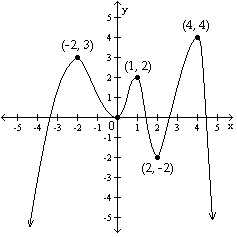Solve the system using the inverse of the coefficient matrix of the equivalent matrix equation. x - 2y + 3z = 114x + y - z = 42x - y + 3z = 10
A. (2, 3, 5)
B. (2, -3, 1)
C. (-2, -3, 3)
D. No solution
Answer: B
You might also like to view...
Fill in the blank with one of the words or phrases listed below.
 An angle that measures 90° is called a(n)
An angle that measures 90° is called a(n) angle.
angle.
A. straight B. acute C. obtuse D. right
Solve the problem.Write an equivalent statement using the distributive property.7 + 11
+ 11 =
=
A. (7 + 11)
B. (77)
C. (7 + 11)
D. (77)
Identify the rules of algebra illustrated from left to right by the following statement. ( r + 5 ) - 5 = r + ( 5 - 5 ) = r + 0 = r
A) distributive property; additive identity property; additive inverse property B) commutative property of addition; additive inverse property; additive identity property C) associative property of addition; additive identity property; additive inverse property D) associative property of addition; additive inverse property; additive identity property E) commutative property of addition; additive identity property; additive inverse property
Locate relative maximum and relative minimum points on the graph. State whether each relative extremum point is a turning point.
A. (4, 4) is a relative maximum point and a turning point. (2, -2) is a relative minimum point and a turning point. B. (-2, 3), (1, 2), and (4, 4) are relative maxima points and turning points. (0, 0) and (2, -2) are relative minima points and turning points. C. (-2, 3), (1, 2), and (4, 4) are relative maxima points and turning points. (2, -2) is a relative minimum point and a turning point. D. (-2, 3), (1, 2), and (4, 4) are relative maxima points. (0, 0) and (2, -2) are relative minima points.